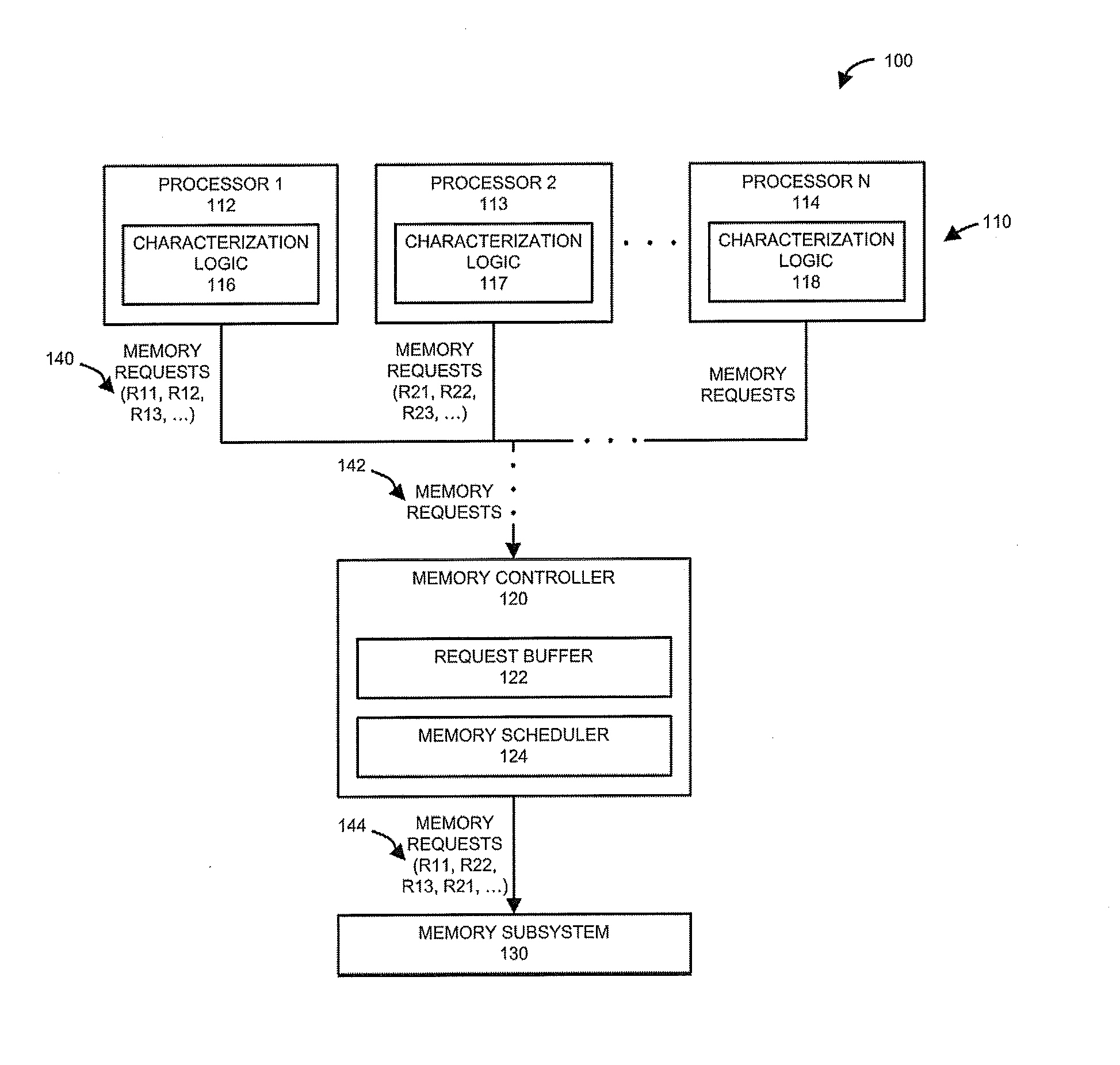System and methods for processor-based memory scheduling
a memory scheduling and processor technology, applied in the field of computer architecture, can solve the problems of complex memory scheduling, limited applicability of memory scheduling that uses an observed characteristic, and long time-consuming requests
- Summary
- Abstract
- Description
- Claims
- Application Information
AI Technical Summary
Benefits of technology
Problems solved by technology
Method used
Image
Examples
Embodiment Construction
[0032]FIG. 1 is a simplified block diagram of an exemplary system implementing memory scheduling, according to one embodiment of the invention. The memory scheduling system 100 includes the at least one processor 110—shown specifically in FIG. 1 as processors 112, 113, and 114—, at least one memory controller 120, and the at least one memory subsystem 130. The at least one processor 110 makes a plurality of memory requests 140—shown specifically in FIG. 1 as requests R11, R12, and R13 made by processor 112 and requests R21, R22, and R23 made by processor 113. The memory controller 120 receives a plurality of memory requests 142, each corresponding to at least one of the memory requests 140. The at least one processor 110 may optionally contain one or more local caches which contain a subset of memory locations. If the location desired by a memory request is found within these local caches, the request completes without reaching the memory controller 120. The memory controller 120 de...
PUM
| Property | Measurement | Unit |
|---|---|---|
| frequency | aaaaa | aaaaa |
| time | aaaaa | aaaaa |
| energy efficiency | aaaaa | aaaaa |
Abstract
Description
Claims
Application Information
 Login to View More
Login to View More - R&D
- Intellectual Property
- Life Sciences
- Materials
- Tech Scout
- Unparalleled Data Quality
- Higher Quality Content
- 60% Fewer Hallucinations
Browse by: Latest US Patents, China's latest patents, Technical Efficacy Thesaurus, Application Domain, Technology Topic, Popular Technical Reports.
© 2025 PatSnap. All rights reserved.Legal|Privacy policy|Modern Slavery Act Transparency Statement|Sitemap|About US| Contact US: help@patsnap.com



